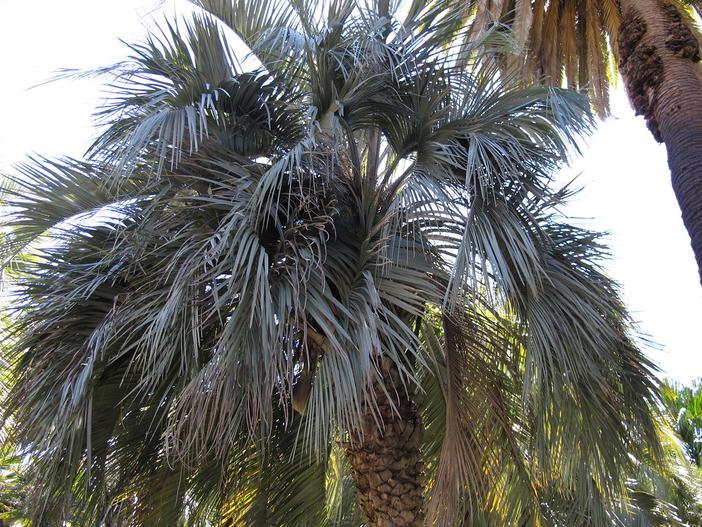Jelly Palm
(Butia capitata)
Jelly Palm (Butia capitata)
/
/

Megan Hansen
CC BY-SA 2.0















































Estimated Native Range
Summary
The Jelly Palm is valued for its ornamental features, including its attractive silhouette and edible fruits, which can be used to make jellies and jams. It is suitable for urban planting, as a specimen tree, or in a Mediterranean-style garden. It requires full sun to part shade and can adapt to a range of soil types, provided they have good drainage. While generally low-maintenance, it can be susceptible to lethal yellowing disease in some regions. The Jelly Palm is also cold-hardy for a palm and can withstand temperatures down to about 15°F (-9°C).CC BY-SA 4.0
Plant Description
- Plant Type: Tree
- Height: 20-35 feet
- Width: 10-15 feet
- Growth Rate: Slow
- Flower Color: Orange, Yellow
- Flowering Season: Spring, Summer
- Leaf Retention: Evergreen
Growth Requirements
- Sun: Full Sun, Part Shade
- Water: Medium
- Drainage: Fast, Medium
Common Uses
Bee Garden, Bird Garden, Deer Resistant, Drought Tolerant, Edible*Disclaimer: Easyscape's listed plant edibility is for informational use. Always verify the safety and proper identification of any plant before consumption., Fragrant, Salt Tolerant, Street Planting
Natural Habitat
Grasslands, savannas, and open woodlands of Brazil, Uruguay, and Argentina
Other Names
Common Names: Pindo Palm , South American Jelly Palm , Geleepalme , Butiapalme , Butia , Butia De Vinaigre , Coco-Azedinho , Coco-Cabeçudo , Butiapalm
Scientific Names: Butia capitata , Cocos capitata , Butia leiospatha , Butia bonnetii , Butia capitata var. rubra , Syagrus capitata , Butia capitata subsp. eucapitata , Butia capitata subsp. rubra , Calappa capitata , Calappa leiospatha
GBIF Accepted Name: Butia capitata (Mart.) Becc.